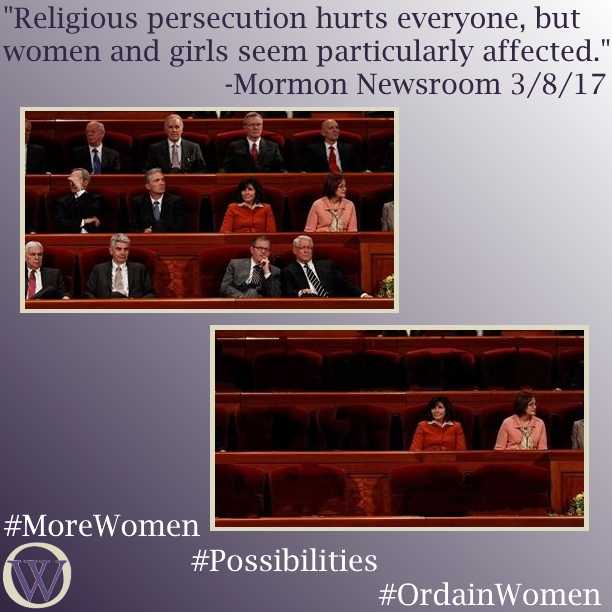If you had known me four years ago, you would have known a largely traditional Mormon woman. I was married in the temple, had three kids, and we had attended the same LDS ward every week for 15 years. My husband and I had served in every kind of church calling, from Young Women President to activities chair. It is not an exaggeration to say that the ward house was our second home.
As I think about the way I have changed in the last few years, I realize that, though I am no longer at home in that ward house, and though I have lost the family that I thought I had there, I know that this is the first time my ward family is really seeing me. They knew me; we served together, we socialized after meetings, and even some of us got together as friends. They were lovely but it took something drastic—my absence—for them to see me.
That should come as no surprise to me.
We don’t really see women at all in our church. We are a community run on the labor of women—in the nursery, in the Primary, in the compassionate service program, and more—and depending on the ability of women to blend into the background of our environment. We count on the organist and chorister[1] to be able to silently become part of the periphery of the chapel podium. We assume that women will prepare their babies and children for religious rites and ordinances only to be physically excluded from all of these precious moments. And we expect that women will plan activities and programs and conferences but will sit reverently while men preside and give the keynote address.
Recently, the Church issued a statement recognizing International Women’s Day, saying, “Limiting religious expression disempowers women from a broad range of faiths.” The statement continues: “A world where women are empowered to follow their conscience is a world of greater peace and possibility.” For too long, women in our faith have been expected to work quietly, directed and presided over by men; our experiences have been defined by the presence and approval of men; and women leaders are nearly indistinguishable in a sea of men. Our participation is mandatory, but our potential is limited.
In April, Ordain Women will have a social media action dedicated to highlighting the invisibility of women in our church. Inspired by the Elle #MoreWomen campaign we will be sharing photos from the LDS newsroom and stock photo collection. The photos will be paired with an altered version that removes the men.

#MoreWomen #Possibilities #OrdainWomen
One look at these photos and you will be struck by the overwhelming presence of men in our community. At baby blessings, at sacrament meeting, in leadership, women are outnumbered and, even more often, completely excluded. We hope you take the time to ponder these photos and ask yourself if they really look like a faith that empowers women and allows them to help bring about a world of greater peace and possibility. Then share the photos and ask your friends the same thing.
[1] I acknowledge men can serve in these callings, but they have been traditionally held by women in my experience and are the only callings that place a woman on the podium.






